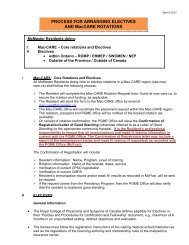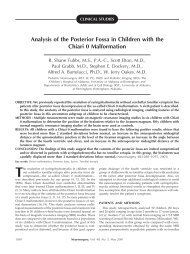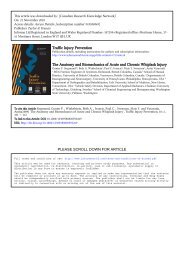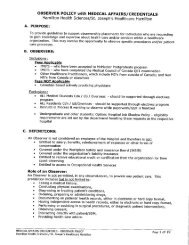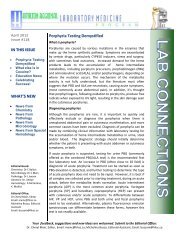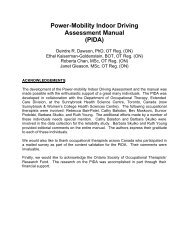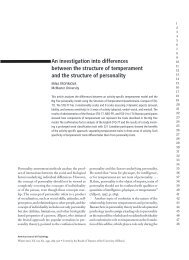Ketamine in Chronic Pain - McMaster University
Ketamine in Chronic Pain - McMaster University
Ketamine in Chronic Pain - McMaster University
You also want an ePaper? Increase the reach of your titles
YUMPU automatically turns print PDFs into web optimized ePapers that Google loves.
It has been suggested that depression or symptoms of depression (transient or chronic) are<br />
an <strong>in</strong>tegral part of the affective or emotional component and a consequence of acute and<br />
chronic pa<strong>in</strong> conditions and the mechanisms by which pa<strong>in</strong> and depression are ma<strong>in</strong>ta<strong>in</strong>ed<br />
differ and are partly <strong>in</strong>dependent.<br />
(Romero-Sandoval, E. Alfonso: Anesthesiology, 2011)<br />
ketam<strong>in</strong>e, <strong>in</strong> doses that did not affect evoked pa<strong>in</strong>-related behaviors (10–20 mg/kg),<br />
effectively reduced depression-like behaviors (immobility us<strong>in</strong>g the forced swim test, and reduced<br />
sucrose preference us<strong>in</strong>g the sucrose preference test).<br />
<strong>Ketam<strong>in</strong>e</strong>’s effects on depression-like behaviors lasted at least 5 days, far outlast<strong>in</strong>g its<br />
presence <strong>in</strong> mean<strong>in</strong>gful concentrations <strong>in</strong> blood or tissue.<br />
Importantly ketam<strong>in</strong>e did not relieve the hypersensitivity to tactile stimuli after peripheral<br />
nerve <strong>in</strong>jury and yet recovered the rats’ normal response to physically react to certa<strong>in</strong><br />
situations and the ability to choose a sweet solution (supposedly pleasurable) over pla<strong>in</strong> water<br />
(Wang J, Goffer Y, Xu D, Tukey DS, Shamir DB, Eberle SE, Zou AH, Blanck TJJ, Ziff EB: A s<strong>in</strong>gle subanesthetic dose of ketam<strong>in</strong>e relieves<br />
depression-like behaviors <strong>in</strong>duced by neuropathic pa<strong>in</strong> <strong>in</strong> rats. ANESTHESIOLOGY 2011; 115:812–21).<br />
Generation----Modulation---Perception—Behaviour<br />
Where does <strong>Ketam<strong>in</strong>e</strong> have predom<strong>in</strong>ant actions?





